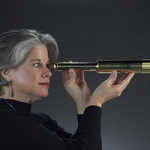You can make a lot of judgements about a city based on how the animals who live there are treated.
It’s not an absolute metric for civilization, of course, but as a general rule, the places I’ve been that have contained happy animals have also contained happy people. On the flip side, places I’ve gone in which the animals are frightened (or frightening) have been filled with humans that are equally scared or scary; folks who rub off on the animals in a negative way.
Despite this correlation being strong, I want to make clear this isn’t an true causal relationship; there are so many reasons why animals act the way they do, and there are so many shades of grey when you say ‘happy’ or ‘healthy’ or ‘antagonistic’ or ‘terrified,’ especially while personifying a non-human.
But despite the non-concreteness of the statement, I stand by it.
The places I’ve enjoyed most in the world are places where the animals have been not just happy, but actually aggressively friendly. In both Reykjavík and Missoula, my two favorite spots at the moment, cats will jump off their front-porch thrones and chase you as you walk by, demanding a pat and some cuddles with loud purring and affectionate cheek-rubbing. Dogs strain at their leashes to lick everyone who comes within earshot, and tend to hold on to their socialization training far better, so they can continue to enjoy the company of the humans they would otherwise miss out on.
The animals know they’ll be treated well, because the people in their city have always treated them well.
In both of the aforementioned cities, the people also tend to be a little friendlier. It’s not something you can quite put your hand on — it’s a ‘vibe’ you have to describe through anecdotes, not data — but it’s there, and the animals reflect it. They pick up on the fact that their owners aren’t going to yell at, beat, eat, or otherwise abuse them, or each other. Domesticated animals reflect back the personality of the people around them, because they’ve been bred — over thousands of years — to ‘fit in’ wherever they find themselves living.
I’ve was hunted by a pack of wild dogs in a shoddy part of town in Buenos Aires; I saw terror in the eyes of the puppies and cats that roamed the streets of Bangkok; I could see the cringing threat in the half-rotted teeth of the street mutts in Kolkata; I know what it looks like when cultural aggression bleeds over into the non-human occupants of an ecosystem.
Thankfully, I also know what it looks like when the positive traits of a culture do the same, sometimes even within the confines of a larger, more animal-negative society.
I snapped a photo of a pack of tiny dogs in Bangkok who had been dressed in sweaters by the street vendors down a street near my flat. It was just a small change, dressing the dogs to survive the chilly nights — no doubt decided by the vendors on a whim — but it made all the difference. I went to those vendors more frequently, and the attitude of the people living, working, and visiting perked up. The whole street just seemed to much friendlier. Happier. The contrast between them and the vendors a street over was stark.
It can be difficult to see the fallout of negative societal traits reflected in the animals that share urban spaces with us, but it can also be an excellent barometer of how well we’re treating the space itself, each other, and ourselves.
Filed Under
Other moments in Bangkok
-
Closing Time
in Bangkok, Thailand -
The mackerel girl and the bacon boys never intend to meet one another...but they finally did
in Bangkok, Thailand -
Here is the Emperor of Lime...
in Bangkok, Thailand -
The ballet tattoo. Your signature. Simple, unfinished lines almost made me chuckled. Yet, it draws me most.
in Bangkok, Thailand -
Innocence. I had a problem grasping the idea of preserving the innocence when I first read The Catcher in the Rye...
in Bangkok, Thailand -
Complex relationship with Fire Exit
in Bangkok, Thailand -
I could still remember the fragrance of last night imprinted deep in my memory
in Bangkok, Thailand -
Food, Travel, Adventure
When In Thailand: How Many Types of Thai Noodles are There? Pt 1: Small
in Bangkok, Thailand -
Food, Travel, Adventure
The Eating Adventure: Bangkok Edition - Duck Noodles in Bang Sue
in Bangkok, Thailand












